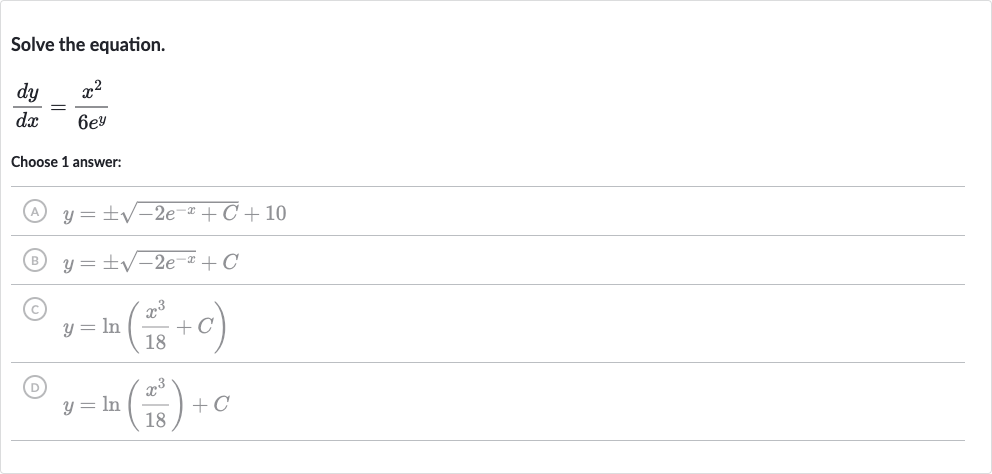AI tutor
Full solution
Q. Solve the equation.Choose answer:(A) (B) (C) (D)
- Separate variables: We are given the differential equation . This is a separable differential equation, which means we can separate the variables and on different sides of the equation. Let's do that.
- Isolate term: Multiply both sides by to get . This isolates the term on the left side.
- Divide by : Now, divide both sides by to get . This isolates the term on the right side.
- Integrate with respect: We can now integrate both sides with respect to their respective variables. The left side with respect to and the right side with respect to . So we have .
- Solve for : The integral of with respect to is , and the integral of with respect to is . So we have , where is the constant of integration.
- Take natural logarithm: Now, we divide both sides by to solve for . This gives us .
- Correct constant of integration: To solve for , we take the natural logarithm (ln) of both sides. This gives us .
- Correct constant of integration: To solve for , we take the natural logarithm (ln) of both sides. This gives us .However, there is a mistake in the previous step. The constant of integration should be a separate term, not divided by . We should have , and then take the natural logarithm of both sides to get .

